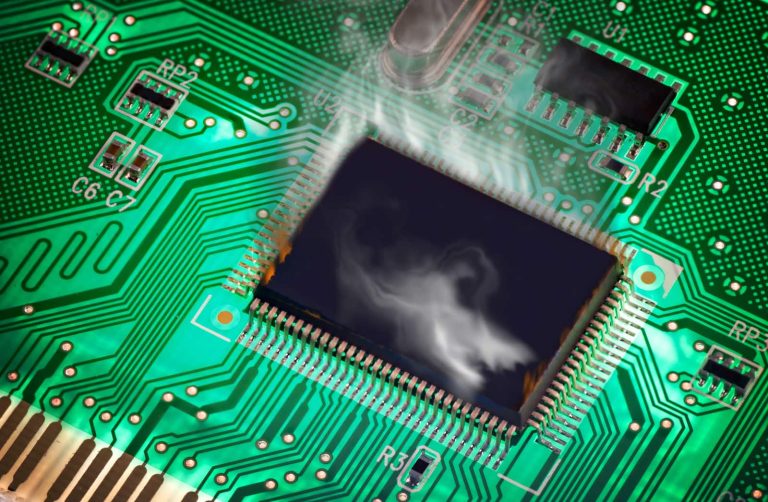When it comes to high-performance gaming desktops, one of the major challenges that users often face is managing thermal issues. The intense processing power and graphics capabilities of gaming rigs can generate a significant amount of heat, which, if not properly addressed, can lead to performance throttling, component damage, and overall system instability. In this article, we will explore efficient cooling solutions, advanced techniques, proper airflow management, monitoring and controlling temperatures, overclocking considerations, and maintenance practices to help you optimize the thermal performance of your gaming desktop.
Efficient Cooling Solutions
Liquid Cooling System Benefits
Liquid cooling systems are highly effective in dissipating heat from high-performance components such as CPUs and GPUs. By circulating liquid through a series of tubes and heat sinks, these systems can provide superior cooling performance compared to traditional air cooling solutions. They are particularly beneficial for overclocked systems and can help maintain stable temperatures even under heavy load.
Advanced Air Cooling Techniques
While liquid cooling is efficient, advanced air cooling techniques can also significantly improve thermal management in gaming desktops. This includes the use of high-performance CPU coolers, strategically placed case fans, and proper cable management to ensure unobstructed airflow within the system.
Proper Airflow Management
Importance of Case Design
The design of your PC case plays a critical role in airflow management. Opt for a case with ample room for cable management, fan placements, and proper ventilation to ensure optimal cooling performance. Additionally, cases with dust filters can help prevent dust buildup and maintain airflow efficiency over time.
Positioning of Fans and Components
Strategically positioning fans within your case can help direct airflow towards critical components and hotspots. Placing intake fans at the front and bottom of the case, and exhaust fans at the rear and top, can create a positive pressure environment that expels hot air effectively.
Monitoring and Controlling Temperatures
Use of Temperature Monitoring Software
Monitoring your system temperatures is crucial to identifying potential thermal issues before they cause damage. Utilize temperature monitoring software to keep track of CPU, GPU, and overall system temperatures in real-time. This allows you to adjust fan speeds, tweak cooling profiles, and address any hotspots promptly.
Overclocking Considerations
Impact on Heat Generation and Dissipation
Overclocking can dramatically increase the heat output of your components, necessitating more robust cooling solutions. When overclocking, ensure that your cooling system can handle the additional heat generated and maintain stable temperatures to prevent thermal throttling and system crashes.
Maintenance and Cleaning Practices
Preventing Dust Buildup
Dust buildup can impede airflow and reduce the effectiveness of your cooling system over time. Regularly clean your PC components, including fans, heat sinks, and filters, to prevent dust accumulation. This simple maintenance practice can help prolong the lifespan of your gaming desktop and ensure optimal thermal performance.
Conclusion
Optimizing thermal performance in high-performance gaming desktops is essential to maintain system stability and longevity. By implementing efficient cooling solutions, proper airflow management techniques, monitoring temperatures, considering overclocking impacts, and practicing regular maintenance, you can overcome thermal challenges and enjoy optimal performance from your gaming rig.
Frequently Asked Questions
1. How often should I clean my gaming desktop to prevent thermal issues?
It is recommended to clean your gaming desktop every 3-6 months to prevent dust buildup and maintain optimal airflow for cooling.
2. Can liquid cooling systems leak and damage my components?
While rare, liquid cooling systems can leak if not properly maintained. Regularly check for leaks and ensure all connections are secure to prevent damage to your components.
3. Is overclocking safe for my gaming desktop in terms of thermal management?
Overclocking can increase heat generation, so it is essential to have a robust cooling system in place before attempting to overclock your system. Monitor temperatures closely to prevent overheating.
4. How can I improve the cooling performance of my GPU in a gaming desktop?
To enhance GPU cooling, consider installing aftermarket GPU coolers, improving case airflow, and ensuring the graphics card has sufficient space for air circulation.
5. What role does thermal paste play in cooling my CPU?
Thermal paste is essential for ensuring optimal heat transfer between the CPU and the heat sink. Applying a high-quality thermal paste correctly can improve cooling efficiency and reduce thermal resistance.
